Under the heatsink
Sapphire is keen to sell this card on the quality of the VRMs, as well as the cooler and the 2GB of memory, so we wanted to have a look and see what's what. For a start, it's interesting to see a completely different design from Sapphire when compared to the original HD 4870 1GB board design.Both use a 3+2 phase system for core and memory, however while the original design uses digital hardware, Sapphire's takes up slightly more PCB space with four PowerPAK MOSFETs per phase, larger, Sapphire branded chokes (three for the core phases) and Nippon Chemicon and Sanyo solid capped capacitors in comparison to the much smaller surface-mount ceramic ones.
The reference card uses a Vitec 59PR9853 multi-phase inductor to control the power for the GPU meanwhile, and the dual VRM circuit for the memory is more basic.

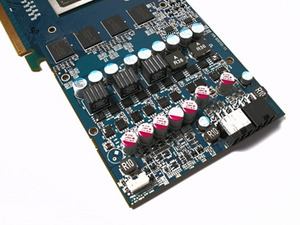
The digital reference design VRMs on the left versus the analogue Sapphire VRMs on the right; click to enlarge
The use of solid capacitors and 'Black Diamond' chokes (a patent-pending Sapphire technology, we're told) should give the Sapphire more tolerance to high temperatures and power spikes. However, it's only the MOSFETS that are cooled by the Sapphire-branded heatsink, although the capacitors are rated to last 20 years at 85°C. The large heatsink does get hot, so the throw-off air of a front-mounted case fan could be handy for long-term use of this card and general overclocking.
Still, at least the MOSFETs get some direct cooling, unlike those of the reference design which are left to fend for themselves.
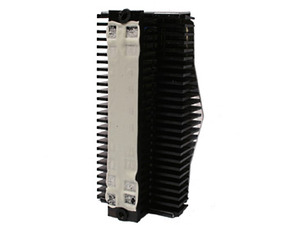
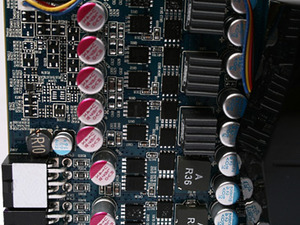
Left: the heatsink for the MOSFETs - you can see where they've pressed into the thermal pad; right: the nude MOSFETs. Click to enlarge
Sapphire has used 16 of Qimonda's 128MB GDDR5 DRAM chips for this card, while the reference card uses eight 128MB Hynix chips.
Inside the cooler
The Vapor-X cooler uses a vapour chamber, to which is bonded a large aluminium heatsink. The fan blows down onto this heatsink to dissipate the heat sucked out of the GPU by by the vapour chamber. The fan has a 4-pin connection to the card, so can vary its speed depending on the temperature of the GPU.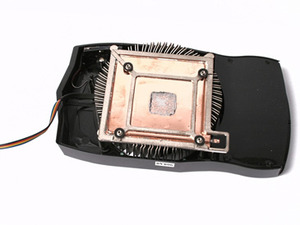

Left: the Vapor-X cooler; right: the LED for the glowing Sapphire logo leaks light back onto the card. Click to enlarge
Sapphire has also included a blue LED-backlit Sapphire logo on the plastic shroud of the cooler, but hasn't been contained to shine forward so light leaks onto heatsink behind it, in a cheap fashion.

MSI MPG Velox 100R Chassis Review
October 14 2021 | 15:04


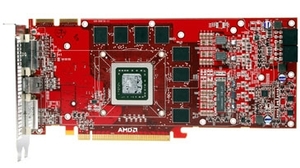
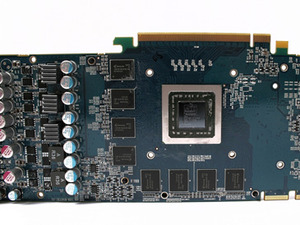







Want to comment? Please log in.